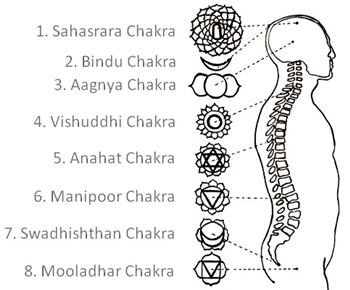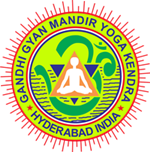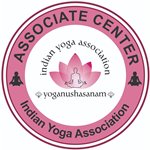- I. The necessary requirements for meditation
- II. The means that facilitate meditation
- III. Activities that facilitate meditation
1. Introduction

All the organs of the body are important. But the mind is the most powerful one. It is most wandering. When lust, anger, passion, greed, conceit, proud, fear etc. are there in the mind, they influence the entire body.
It is said that light travels at a speed of about 3,00,000 kms in a second. But the mind travels faster than the light. Mind is the spring of wants. If one want is satisfied, the other is there to attract the attention of the mind. The mind is related with the worldly aspects by sense organs and other working organs.
One of the major objectives of Yoga science is to acquire the skill of controlling the sense organs and streamlining the energy of the mind. Jap, Bhajans, Keertans, Poojas, Yagnyas, Tapasya, Pranayaam, Meditation etc. help in acquiring the above skill. Meditation is one of the powerful means to control the mind and regularise the thinking.
The main aim of Yogasans is to keep the body in a single posture for a long time because the movements of the body often disturb the concentration.
Meditation controls the mind from wandering. Therefore every person should make it a necessary habit of meditating for at least few minutes daily without fail.
I. The necessary requirements for meditation:
1. The place should be neat and clean, solitude with dim light.
2. The time is preferably early morning. Meditating before going to bed in the night is also useful. If these two times are not convenient, one may meditate at any convenient time.
3. The posture may be either Sukhasan or Vajrasan or Padmasan or Siddhasan. Neck, back, waist and backbone should be erect. Head should not be bent. Eyes should be closed and then the mind should be made concentrated. Initially one may perform in any comfortable posture.
4. Meditation should be practiced everyday. It is very good if meditation becomes a habit.
5. The other rules may be referred in Chapter 5.
II. The means that facilitate meditation:
Asanas, Pranayaam, viewing the thoughts, streamlining the thoughts, giving up the thoughts, focussing the sight, merging in the sound, chanting the mantras and concentration are the major means that facilitate meditation.
1. Asanas:
2. Pranayaam:
Pranayaam helps a lot in concentration. During Pranayaam, the mind is concentrated on the breath. This concentration prepares the mind for meditation.
3. Viewing the thoughts:
A number of thoughts come into the mind when meditation is started. They should not be stopped at the beginning. Thoughts should be watched as the ongoing traffic on the road is watched without any attachment. This is not an easy task. But can be acquired by constant practice.
4. Streamlining the thoughts:
The thoughts are to be streamlined one after the other, so that they are finally be thought off. The mind should be cool and calm.
5. Giving up the thoughts:
How long a particular thought can be continuous in the mind!?For a few seconds, then another thought generates from the first one. As one existing thought is given up and the next thought is postponed, a state of silence is created in mind. Though this is not easy, still it is a must to reach this thoughtless state. Patanjali has described this state of mind as Pratyahar. If a practitioner reaches this state, he may be deemed to be progressing towards in the path of meditation.
6. Dharana or concentration:
When we say concentration, there must be something to be concentrated upon. It may be breath, a sound, a mantra, a figure or an idol. It may be a part of the body also such as center between the eyebrows, throat, heart and navel. Concentration of mind on something is the primary stage of meditation.
7. Meditation:
After acquiring the skill of concentration, one reaches to its depth and feels uniting the body, mind and spirit together as a single unit. This is a great achievement. This state is the apex of the meditation.
III. Activities that facilitate meditation:
The following activities help in acquiring the above skills that facilitate meditation. Whenever a little time is available, they may be practiced.
1. Traatak:
As the mind ponders every time, so are the eyes. They never rest for a long time on a particular spot. Therefore one should practice to concentrate the sight on a particular object or on the flame of a lamp or candle. This activity helps in practicing meditation.
2. Sub-merge in the sound:
One should submerge himself by concentrating on a deep sound of Om or any such other sound. This submergence helps a lot in practicing meditation. Om sound generates in the navel proceeds through the heart and comes out. Submerging in such a sound gradually keeps the mind away from other external sounds and only the inner sound is felt. This is called Brahmanaad or the Supreme sound.
3. Mantra Jap:
The Mantra preached by the Guru at the time of initiation or any other spiritual mantra combined with breath is chanted inside the mind. This chanting helps in concentration. The hyms, Om, Om Namashivaya, Gayatri, Alla.ho.Akbar, Namaskar, Vaheguru, Soham etc. are the mantras of different religions. They are to be chanted with accurate pronunciation without any syllabical fault, in their pure and chaste utterances. This can be practiced after taking bath, wearing clean clothes, sitting in a neat and clean place at any time. This gives the mental peace and tranquility. The external sound of the chanting of these mantras is to be gradually slowed down. Later it should be heard only inside the mind. This is a wonderful state, that paves the way towards the spiritual bliss.
4. Kundalini Yoga – Sapta Chakras:
Among many methods of Dhyan Yoga, awakening or stimulating the hidden power – Kundalini and its related seven psychic centers of energy of tantrika shasthra has acquired a great importance in the modern world too.

There are seven (Plus one) psychic centers in the body. They are defined as micro shadow groups by Yogis.
The Tantrikas opined and decided that apart from these seven, there exists one more chakra called “Bindu Chakra’. These chakras contribute a lot in meditation.
Each chakra is to be penetrated by the concentrated mind. This is called Chakra Bhedan. This should be practiced strictly according to the instructions of the Guru or an expert guide. As it awakens and stimulates the Kundalini power, if the practitioner is not accurately cautious it may harm.
Chakras1. Mooladhar Chakra |
Physical Effects / Stimulates /BenefitsConstipation, piles, gastric problems |
![]()
The perfection in the meditation can be achieved by concentrating the mind on the suggested activities that facilitate meditation. If meditation becomes a habit, the mind settles in a peaceful state. The efficiency of the work is increased. The individual is enlightened. Society progresses and the nation develops.
![]()

